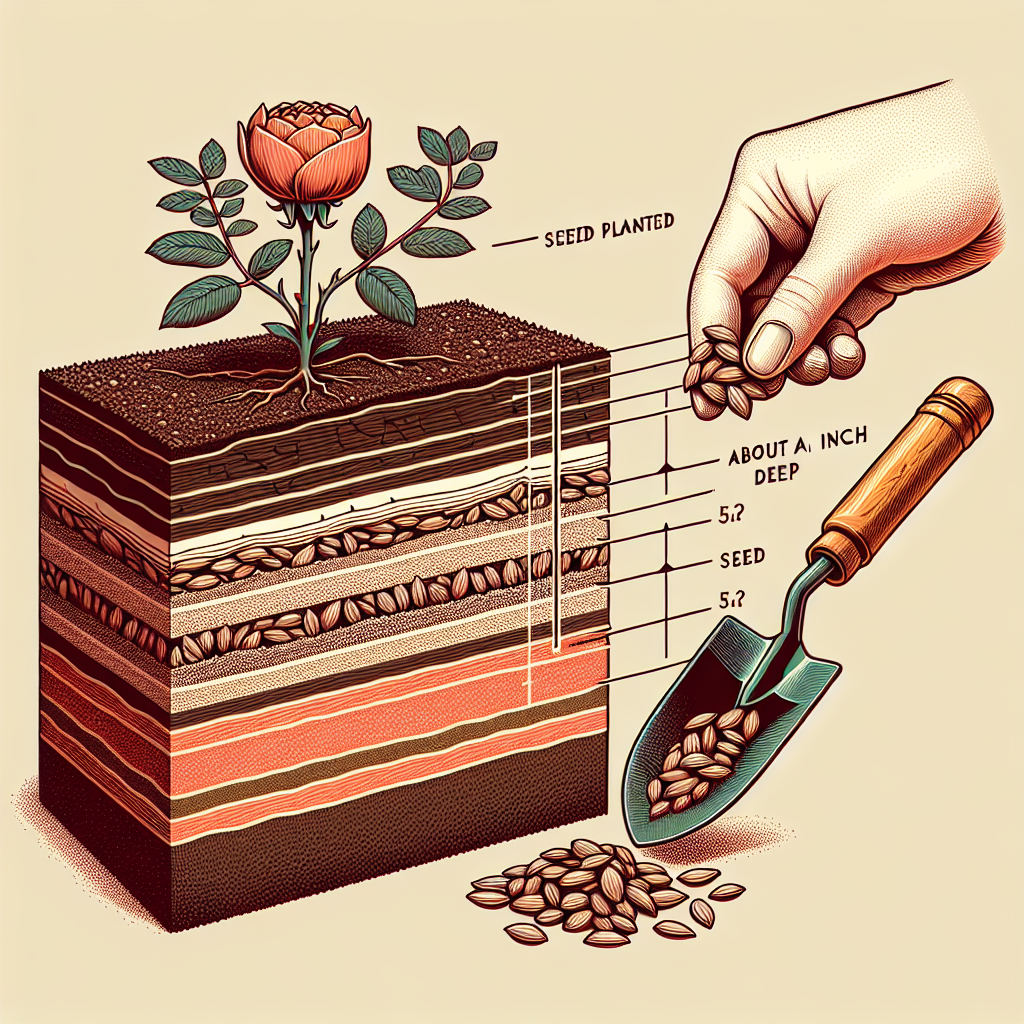
How deep to plant rose of sharon seeds
How Deep to Plant Rose of Sharon Seeds: A Comprehensive Guide
Rose of Sharon (Hibiscus syriacus) is a beautiful and hardily flowering shrub that can add an enchanting touch to any garden. Known for its vibrant blooms, the Rose of Sharon is also a favorite among pollinators, making it an essential addition if you’re looking to create an environmentally friendly space. Planting seeds can sometimes be a bit daunting for gardeners, especially when it comes to understanding **how deep to plant rose of sharon seeds**. In this guide, we will delve into this topic and cover everything you need to know for successful germination and growth.
The Basics of Rose of Sharon Seeds
Before we get into the specifics of planting, it’s essential to understand the characteristics of Rose of Sharon seeds. These seeds can be collected from the shrub itself or purchased from garden centers. Here are some key characteristics:
- The seeds are typically small and have a firm, hard outer shell.
- They can take some time to germinate, often requiring a stratification process to break dormancy.
- Rose of Sharon seeds thrive in well-drained soil and prefer full sunlight.
Choosing the Right Time for Planting
The timing of planting is crucial for the successful germination of Rose of Sharon seeds. Generally, it's best to plant these seeds in spring or early summer. This allows the seeds to take full advantage of the warm weather and longer days. Here are some tips for timing your planting:
- Start your seeds indoors about 6-8 weeks before the last expected frost.
- If you’re planting directly outdoors, wait until the soil temperature is consistently above 70°F (21°C).
- Monitor your local climate and adapt your planting schedule accordingly.
Preparing for Planting
Preparation is key to successful planting. Here’s how you can prepare for planting Rose of Sharon seeds:
- Choose Your Container: If starting indoors, select seed trays or small pots to hold the soil and seeds.
- Soil Mix: Use a well-draining potting mix. A mix that includes peat moss, perlite, and vermiculite works well.
- Stratification: Before planting, you may want to stratify your seeds to ensure they germinate effectively. This involves placing them in a damp paper towel in a sealed plastic bag and storing them in the refrigerator for about 30 days.
Planting the Seeds
Now, let's focus on the most critical aspect—**how deep to plant rose of sharon seeds**. Here are the factors to consider:
- **Seed Depth:** A general rule is to plant seeds about 1/4 inch deep in the soil.
- **Spacing:** Keep a distance of 2-3 inches between seeds if planting multiple seeds in one container.
- **Orient the Seeds:** Ensure the seeds are positioned with the pointed end facing down if planting directly into the ground.
Watering and Care
After planting, watering and care are crucial to ensure healthy growth. Here are some key tips:
- **Water Regularly:** Keep the soil moist but not waterlogged. Overwatering can lead to seed rot.
- **Light Conditions:** Provide plenty of bright light for indoor seeds. A south-facing window or grow lights can be beneficial.
- **Temperature:** Maintain a temperature of around 70-75°F (21-24°C) for optimal germination.
"Planting seeds is an act of faith. A little patience and care can yield spectacular results!"
Transplanting Seedlings
Once your seedlings have developed two sets of true leaves, it’s time to think about transplanting them into the garden or larger pots. Here’s how:
- **Choose the Right Location:** Select a spot that receives full sun and has well-drained soil.
- **Prepare the Soil:** Amend the garden soil with compost to improve its nutrient content.
- **Transplanting:** Carefully remove seedlings from their containers keeping the root system intact and plant them in holes that are twice as wide as the root ball.
- **Aftercare:** Water the newly transplanted seedlings thoroughly and monitor their growth closely during the initial weeks.
Pest and Disease Management
While the Rose of Sharon is generally a hardy plant, it can still fall prey to pests and diseases. Regular inspection and maintenance can prevent many issues. Here’s what to keep an eye on:
- **Common Pests:** Aphids, spider mites, and whiteflies can be problematic. Consider organic pesticides or neem oil to manage these pests.
- **Diseases to Watch:** Look out for issues like powdery mildew and leaf spots. Ensuring good air circulation and avoiding overhead watering can help prevent these diseases.
- **Healthy Practices:** Regular pruning can promote better air circulation and overall plant health.
When to Expect Blooms
One of the most exciting aspects of growing Rose of Sharon is waiting for those stunning flowers to bloom. Generally, you can expect blooms:
- **First Year:** If planted from seed, it typically takes a year or two for the plant to produce flowers.
- **Blooming Season:** The flowers will appear in late summer and can last until the first frost.
- **Varied Colors:** Depending on the variety, blooms can be white, pink, purple, or blue, providing a beautiful display in your garden.
Final Thoughts
In conclusion, growing Rose of Sharon from seeds can be a rewarding experience, provided you understand **how deep to plant rose of sharon seeds** and ensure proper care during germination and beyond. Coupled with the right environmental conditions and maintenance, this beautiful flowering shrub can become a stunning centerpiece in your garden. Be patient and enjoy the process, from planting to the first blooms!
Now that you are equipped with the knowledge of planting Rose of Sharon seeds, why not start planning your own garden? Happy planting!
By Guest, Published on September 28th, 2024